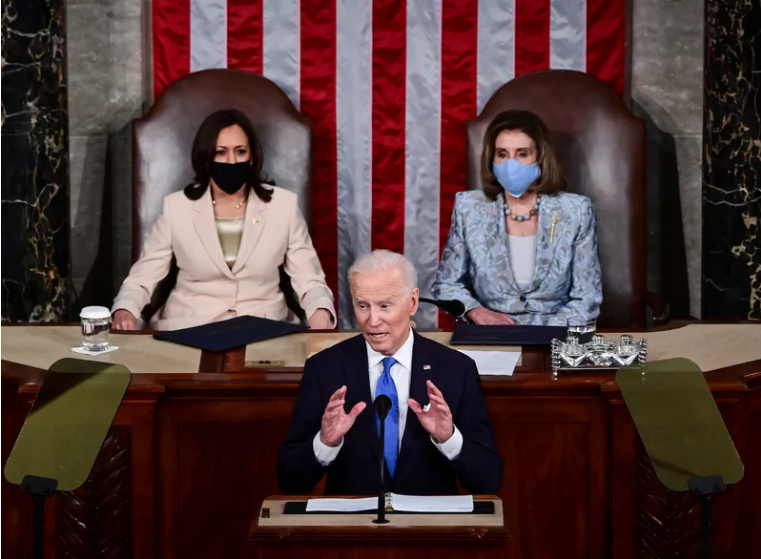
President Biden's joint address to Congress looked back over the challenges he faced taking office 100 days ago in the midst of a pandemic — and declared "America is on the move again." But the speech also outlined an ambitious, active role for the government to continue helping Americans struggling, as well as new proposals to boost the country's ability to compete. It amounted to an updated New Deal, but one that faces a precarious path to get through razor-thin margins in both the House and Senate.
Because of the pandemic and the personality of President Biden, the hour-plus speech was a stark contrast from his predecessor's. It was a more low-key and traditional litany of policy priorities instead of the often unpredictable and unscripted moments seen in former President Donald Trump's speeches on Capitol Hill.
Instead of facing a crowded chamber of lawmakers ready to interrupt with loud cheers, Biden spoke to a mostly empty chamber — only 200 attendees instead of the usual 1,600. The former senator felt at home, ad-libbing references to his former colleagues in Congress, and seeming nostalgic about his time walking the halls in the Capitol. But he also spoke to a deeply divided room that almost had polar opposite reactions to the bulk of his presentation.
Here are some takeaways from the joint address:
1. Era of big government is back, and Biden is all in
Former President Bill Clinton notably declared in his 1996 State of the Union address that "the era of big government is over," marking a shift for Democrats then trying to show attention to fiscal responsibility. But Biden, in unabashedly rolling out new, liberal federal programs, rejected that and instead argued government was the solution.











